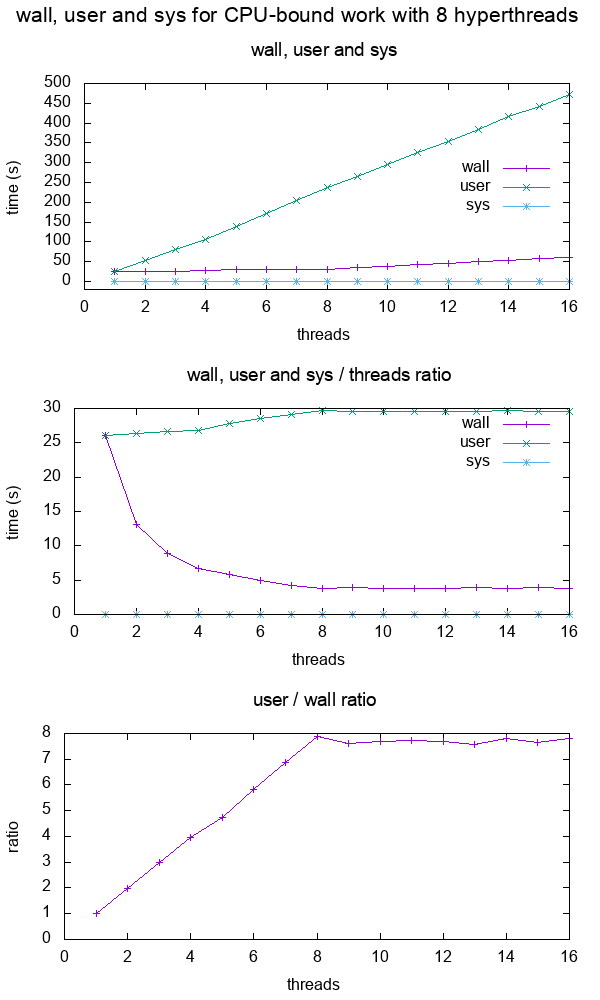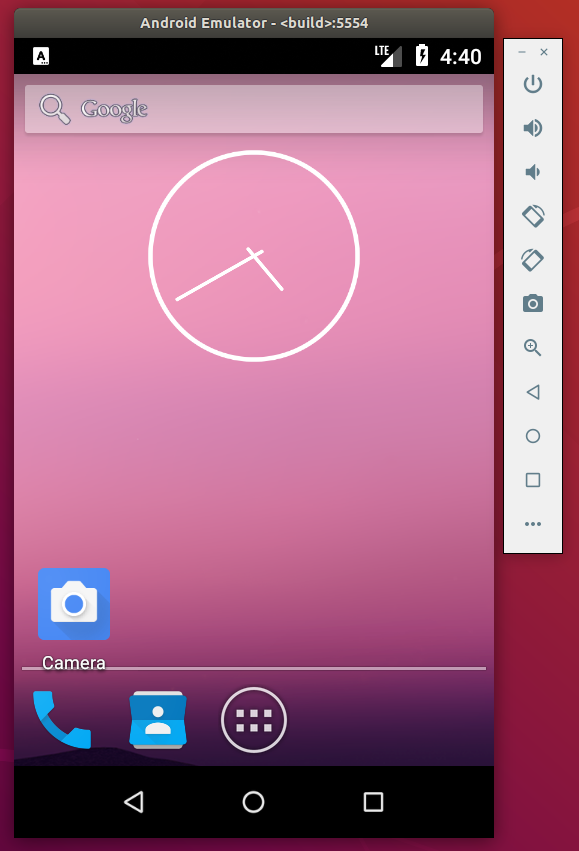The best articles by Ciro Santilli Updated 2025-07-16
These are the best articles ever authored by Ciro Santilli, most of them in the format of Stack Overflow answers.
Ciro posts update about new articles on his Twitter accounts.
Some random generally less technical in-tree essays will be present at: Section "Essays by Ciro Santilli".
- Trended on Hacker News:
- CIA 2010 covert communication websites on 2023-06-11. 190 points, a mild success.
- x86 Bare Metal Examples on 2019-03-19. 513 points. The third time something related to that repo trends. Hacker news people really like that repo!
- again 2020-06-27 (archive). 200 points, repository traffic jumped from 25 daily unique visitors to 4.6k unique visitors on the day
- How to run a program without an operating system? on 2018-11-26 (archive). 394 points. Covers x86 and ARM
- ELF Hello World Tutorial on 2017-05-17 (archive). 334 points.
- x86 Paging Tutorial on 2017-03-02. Number 1 Google search result for "x86 Paging" in 2017-08. 142 points.
- x86 assembly
- What does "multicore" assembly language look like?
- What is the function of the push / pop instructions used on registers in x86 assembly? Going down to memory spills, register allocation and graph coloring.
- Linux kernel
- What do the flags in /proc/cpuinfo mean?
- How does kernel get an executable binary file running under linux?
- How to debug the Linux kernel with GDB and QEMU?
- Can the sys_execve() system call in the Linux kernel receive both absolute or relative paths?
- What is the difference between the kernel space and the user space?
- Is there any API for determining the physical address from virtual address in Linux?
- Why do people write the
#!/usr/bin/envpython shebang on the first line of a Python script? - How to solve "Kernel Panic - not syncing: VFS: Unable to mount root fs on unknown-block(0,0)"?
- Single program Linux distro
- QEMU
- gcc and Binutils:
- How do linkers and address relocation works?
- What is incremental linking or partial linking?
- GOLD (
-fuse-ld=gold) linker vs the traditional GNU ld and LLVM ldd - What is the -fPIE option for position-independent executables in GCC and ld? Concrete examples by running program through GDB twice, and an assembly hello world with absolute vs PC relative load.
- How many GCC optimization levels are there?
- Why does GCC create a shared object instead of an executable binary according to file?
- C/C++: almost all of those fall into "disassemble all the things" category. Ciro also does "standards dissection" and "a new version of the standard is out" answers, but those are boring:
- What does "static" mean in a C program?
- In C++ source, what is the effect of
extern "C"? - Char array vs Char Pointer in C
- How to compile glibc from source and use it?
- When should
static_cast,dynamic_cast,const_castandreinterpret_castbe used? - What exactly is
std::atomicin C++?. This answer was originally more appropriately entitled "Let's disassemble some stuff", and got three downvotes, so Ciro changed it to a more professional title, and it started getting upvotes. People judge books by their covers. notmain.o 0000000000000000 0000000000000017 W MyTemplate<int>::f(int) main.o 0000000000000000 0000000000000017 W MyTemplate<int>::f(int)Code 1.. From: What is explicit template instantiation in C++ and when to use it?nmoutputs showing that objects are redefined multiple times across files if you don't use template instantiation properly
- IEEE 754
- What is difference between quiet NaN and signaling NaN?
- In Java, what does NaN mean?
Without subnormals: +---+---+-------+---------------+-------------------------------+ exponent | ? | 0 | 1 | 2 | 3 | +---+---+-------+---------------+-------------------------------+ | | | | | | v v v v v v ----------------------------------------------------------------- floats * **** * * * * * * * * * * * * ----------------------------------------------------------------- ^ ^ ^ ^ ^ ^ | | | | | | 0 | 2^-126 2^-125 2^-124 2^-123 | 2^-127 With subnormals: +-------+-------+---------------+-------------------------------+ exponent | 0 | 1 | 2 | 3 | +-------+-------+---------------+-------------------------------+ | | | | | v v v v v ----------------------------------------------------------------- floats * * * * * * * * * * * * * * * * * ----------------------------------------------------------------- ^ ^ ^ ^ ^ ^ | | | | | | 0 | 2^-126 2^-125 2^-124 2^-123 | 2^-127Code 2.Visualization of subnormal floating point numbers vs what IEEE 754 would look like without them. From: What is a subnormal floating point number?
- Computer science
- Algorithms
Figure 5. Average insertion time into heaps, binary search tree and hash maps of the C++ standard library. Source. From: Heap vs Binary Search Tree (BST)
- Is it necessary for NP problems to be decision problems?
- Polynomial time and exponential time. Answered focusing on the definition of "exponential time".
- What is the smallest Turing machine where it is unknown if it halts or not?. Answer focusing on "blank tape" initial condition only. Large parts of it are summarizing the Busy Beaver Challenge, but some additions were made.
- Algorithms
- Git
| 0 | 4 | 8 | C | |-------------|--------------|-------------|----------------| 0 | DIRC | Version | File count | ctime ...| 0 | ... | mtime | device | 2 | inode | mode | UID | GID | 2 | File size | Entry SHA-1 ...| 4 | ... | Flags | Index SHA-1 ...| 4 | ... |Code 3.ASCII art depicting the binary file format of the Git index file. From: What does the git index contain EXACTLY?tree {tree_sha} {parents} author {author_name} <{author_email}> {author_date_seconds} {author_date_timezone} committer {committer_name} <{committer_email}> {committer_date_seconds} {committer_date_timezone} {commit message}Code 4.Description of the Git commit object binary data structure. From: What is the file format of a git commit object data structure?- How do I clone a subdirectory only of a Git repository?
- Python
- Web technology
- OpenGL
Figure 7. OpenGL rendering output dumped to a GIF file. Source. From: How to use GLUT/OpenGL to render to a file?- What are shaders in OpenGL?
- Why do we use 4x4 matrices to transform things in 3D?
Figure 10. Sinusoidal circular wave heatmap generated with an OpenGL shader at 60 FPS on SDL. Source.
- Node.js
- Ruby on Rails
- POSIX
- What is POSIX? Huge classified overview of the most important things that POSIX specifies.
- Systems programming
- What do the terms "CPU bound" and "I/O bound" mean?
Figure 12. Plot of "real", "user" and "sys" mean times of the output of time for CPU-bound workload with 8 threads. Source. From: What do 'real', 'user' and 'sys' mean in the output of time?+--------+ +------------+ +------+ | device |>---------------->| function 0 |>----->| BAR0 | | | | | +------+ | |>------------+ | | | | | | | +------+ ... ... | | |>----->| BAR1 | | | | | | +------+ | |>--------+ | | | +--------+ | | ... ... ... | | | | | | | | +------+ | | | |>----->| BAR5 | | | +------------+ +------+ | | | | | | +------------+ +------+ | +--->| function 1 |>----->| BAR0 | | | | +------+ | | | | | | +------+ | | |>----->| BAR1 | | | | +------+ | | | | ... ... ... | | | | | | +------+ | | |>----->| BAR5 | | +------------+ +------+ | | | ... | | | +------------+ +------+ +------->| function 7 |>----->| BAR0 | | | +------+ | | | | +------+ | |>----->| BAR1 | | | +------+ | | ... ... ... | | | | +------+ | |>----->| BAR5 | +------------+ +------+Code 5.Logical struture PCIe device, functions and BARs. From: What is the Base Address Register (BAR) in PCIe?
- Electronics
- Raspberry Pi
Figure 13. Raspberry Pi 2 directly connected to a laptop with an Ethernet cable. Image from answer to: How to hook up a Raspberry Pi via Ethernet to a laptop without a router?Figure 14. . Image from answer to: How to hook up a Raspberry Pi via Ethernet to a laptop without a router? Figure 15. . Image from answer to: How to emulate the Raspberry Pi 2 on QEMU? Figure 16. Bare metal LED blinker program running on a Raspberry Pi 2. Image from answer to: How to run a C program with no OS on the Raspberry Pi?
- Raspberry Pi
- Computer security
- Media
Video 2. Canon in D in C. Source.The original question was deleted, lol...: How to programmatically synthesize music?- How to resize a picture using ffmpeg's sws_scale()?
- Is there any decent speech recognition software for Linux? ran a few examples manually on
vosk-apiand compared to ground truth.
- Eclipse
- Computer hardware
- Scientific visualization software
Figure 17. VisIt zoom in 10 million straight line plot with some manually marked points. Source. From: Section "Survey of open source interactive plotting software with a 10 million point scatter plot benchmark by Ciro Santilli"
- Numerical analysis
- Computational physics
- Register transfer level languages like Verilog and VHDL
- Verilog:
Figure 19. . See also: Section "Verilator interactive example"
- Verilog:
- Android
Video 4. Android screen showing live on an Ubuntu laptop through ADB. Source. From: How to see the Android screen live on an Ubuntu desktop through ADB?
- Debugging
- Program optimization
- What is tail call optimization?
Figure 21. . Source. The answer compares gprof, valgrind callgrind, perf and gperftools on a single simple executable.
- Data
Figure 22. Mathematics dump of Wikipedia CatTree. Source. In this project, Ciro Santilli explored extracting the category and article tree out of the Wikipedia dumps.
- Mathematics
Figure 23. Diagram of the fundamental theorem on homomorphisms by Ciro Santilli (2020)Shows the relationship between group homomorphisms and normal subgroups.- Section "Formalization of mathematics": some early thoughts that could be expanded. Ciro almost had a stroke when he understood this stuff in his teens.
Figure 24. Simple example of the Discrete Fourier transform. Source. That was missing from Wikipedia page: en.wikipedia.org/wiki/Discrete_Fourier_transform!
- Network programming
- Physics
- What is the difference between plutonium and uranium?
Figure 25. Spacetime diagram illustrating how faster-than-light travel implies time travel. From: Does faster than light travel imply travelling back in time?
- Biology
Figure 26. Top view of an open Oxford Nanopore MinION. Source. From: Section "How to use an Oxford Nanopore MinION to extract DNA from river water and determine which bacteria live in it"Figure 27. Mass fractions in a minimal growth medium vs an amino acid cut in a simulation of the E. Coli Whole Cell Model by Covert Lab. Source. From: Section "E. Coli Whole Cell Model by Covert Lab"
- Quantum computing
- Section "Quantum computing is just matrix multiplication"
Figure 28. Visualization of the continuous deformation of states as we walk around the Bloch sphere represented as photon polarization arrows. From: Understanding the Bloch sphere.
- Bitcoin
- GIMP
Figure 29. GIMP screenshot part of how to combine two images side-by-side in GIMP?
- Home DIY
Figure 30. Total_Blackout_Cassette_Roller_Blind_With_Curtains.Source. From: Section "How to blackout your window without drilling"
- China
Computational physics Updated 2025-07-16
Computational physics is a good way to get valuable intuition about the key equations of physics, and train your numerical analysis skills:
- classical mechanics
- "Real-time heat equation OpenGL visualization with interactive mouse cursor using relaxation method" under the best articles by Ciro Articles
- phet.colorado.edu PhET simulations from University of Colorado Boulder
Other child sections:
FreeFem Updated 2025-07-16
Started in 1987 and written in Pascal, by the French from Pierre and Marie Curie University, the French are really strong in numerical analysis.
The fact that French wrote it can be seen in the documentation, for example doc.freefem.org/tutorials/index.html uses file extension
mycode.edp instead of mycode.pde where dep stands for "Équation aux dérivées partielles".Besides the painful build, using FreeFem is relatively simple, as can be seen from the examples on the website.
They do use a domain-specific language on the examples, which appears to be the main/only interface, which is a bad thing, Ciro would rather have a Python API as the "main API", which is more the approach taken by the FEniCS Project, but so be it. This domain-specific language business means that you always stumble upon basic stuff you want to do but can't, and then you have to think about how to share data between the simulation and the plotting. The plotting notably is super complex and they can't implement all of what people want, upstream examples often offload that to gnuplot. This is potentially a big advantage of FEniCS Project.
It nice though that they do have some graphics out of the box, as that allows to quickly debug common problems.
Uses variational formulation of a partial differential equation, which is not immediately obvious to beginners? The introduction doc.freefem.org/tutorials/poisson.html gives an ultra quick example, but your are mostly on your own with that.
On Ubuntu 20.04, the
freefem is a bit out-of-date (3.5.8, there isn't even a tag for that in the GitHub repo, and refs/tags/release_3_10 is from 2010!) and fails to run the examples from the website. It did work with the example package though, but the output does not have color, which makes me sad :-)sudo apt install freefem freefem-examples
freefem /usr/share/doc/freefem-examples/heat.pdeSo let's just compile the latest v4.6 it from source, on Ubuntu 20.04:
sudo apt build-dep freefem
git clone https://github.com/FreeFem/FreeFem-sources
cd FreeFem-sources
# Post v4.6 with some fixes.
git checkout 3df0e2370d9752801ac744b11307b14e16743a44
# Won't apply automatically due to tab hell.
# https://superuser.com/questions/607410/how-to-copy-paste-tab-characters-via-the-clipboard-into-terminal-session-on-gnom
git apply <<'EOS'
diff --git a/3rdparty/ff-petsc/Makefile b/3rdparty/ff-petsc/Makefile
index dc62ab06..13cd3253 100644
--- a/3rdparty/ff-petsc/Makefile
+++ b/3rdparty/ff-petsc/Makefile
@@ -204,7 +204,7 @@ $(SRCDIR)/tag-make-real:$(SRCDIR)/tag-conf-real
$(SRCDIR)/tag-install-real :$(SRCDIR)/tag-make-real
cd $(SRCDIR) && $(MAKE) PETSC_DIR=$(PETSC_DIR) PETSC_ARCH=fr install
-test -x "`type -p otool`" && make changer
- cd $(SRCDIR) && $(MAKE) PETSC_DIR=$(PETSC_DIR) PETSC_ARCH=fr check
+ #cd $(SRCDIR) && $(MAKE) PETSC_DIR=$(PETSC_DIR) PETSC_ARCH=fr check
test -e $(DIR_INSTALL_REAL)/include/petsc.h
test -e $(DIR_INSTALL_REAL)/lib/petsc/conf/petscvariables
touch $@
@@ -293,7 +293,6 @@ $(SRCDIR)/tag-tar:$(PACKAGE)
-tar xzf $(PACKAGE)
patch -p1 < petsc-hpddm.patch
ifeq ($(WIN32DLLTARGET),)
- patch -p1 < petsc-metis.patch
endif
touch $@
$(PACKAGE):
EOS
autoreconf -i
./configure --enable-download --enable-optim --prefix="$(pwd)/../FreeFem-install"
./3rdparty/getall -a
cd 3rdparty/ff-petsc
make petsc-slepc
cd -
./reconfigure
make -j`nproc`
make install
cd ../FreeFem-install
PATH="${PATH}:$(pwd)/bin" ./bin/FreeFem++ ../FreeFem-sources/examples/tutorial/Ciro's initial build experience was a bit painful, possibly because it was done on a relatively new Ubuntu 20.04 as of June 2020, but in the end it worked: github.com/FreeFem/FreeFem-sources/issues/141
Hans Bethe Updated 2025-07-16
Richard Feynman was working under him there, and was promoted to team lead by him because Richard impressed Hans.
He was also the person under which Freeman Dyson was originally under when he moved from the United Kingdom to the United States.
And Hans also impressed Feynman, both were problem solvers, and liked solving mental arithmetic and numerical analysis.
This relationship is what brought Feynman to Cornell University after World War II, Hans' institution, which is where Feynman did the main part of his Nobel prize winning work on quantum electrodynamics.
Hyperparameter Updated 2025-07-16
In the case of machine learning in particular, it is not part of the training data set.
Hyperparameters can also be considered in domains outside of machine learning however, e.g. the step size in partial differential equation solver is entirely independent from the problem itself and could be considered a hyperparamter. One difference from machine learning however is that step size hyperparameters in numerical analysis are clearly better if smaller at a higher computational cost. In machine learning however, there is often an optimum somewhere, beyond which overfitting becomes excessive.



























